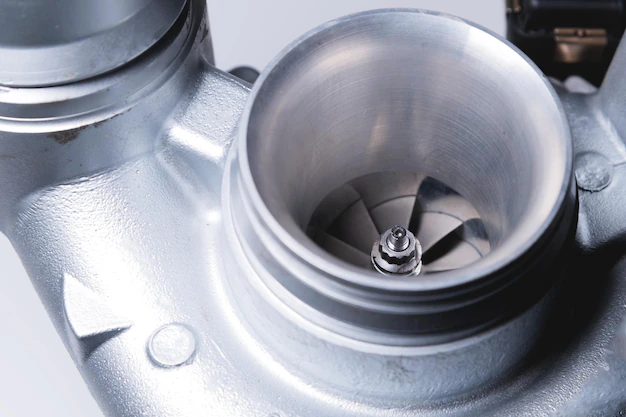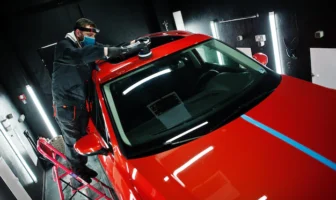
In a world where speed and efficiency reign supreme, the quest for more powerful and efficient automotive technology is relentless. At the heart of this pursuit lies the turbocharger, a marvel of engineering that has transformed the automotive landscape.
Turbochargers are designed to boost an engine’s efficiency and power output by forcing extra air into the combustion chamber, increasing the amount of fuel that can be combusted.
The Mechanics of a Turbocharger
A turbocharger consists of two main components: the turbine and the compressor. The turbine is powered by the engine’s exhaust gases, which rotate it at high speeds. This rotation drives the compressor, which draws in and compresses air before feeding it into the engine. The result is a significant increase in the engine’s power without needing a larger engine size.
Advantages of Turbocharging
- Increased Power: Turbochargers can significantly enhance engine power.
- Improved Efficiency: They make engines more efficient, delivering more power with less fuel.
- Reduced Emissions: By burning fuel more completely, turbochargers help reduce exhaust emissions.
- Compact Size: Turbochargers allow for smaller engine sizes without sacrificing power.
The Evolution of Turbo Technology
The history of turbochargers is a tale of constant innovation and refinement. Turbochargers have undergone significant transformations from their early use in aircraft engines during World War I to their widespread adoption in commercial vehicles and passenger cars.
Pioneering Phases
- Early Innovations: The initial development focused on enhancing aircraft engine performance.
- Post-War Adaptation: Turbochargers began appearing in commercial vehicles after World War II.
- Passenger Vehicle Integration: The energy crises of the 1970s spurred their use in passenger cars for better fuel efficiency.
Modern Turbochargers
Today’s turbochargers are more advanced, reliable, and efficient. They incorporate cutting-edge materials and sophisticated electronic controls for optimal performance across various engine speeds and conditions.
The Turbocharged Future
The future of turbocharging is incredibly promising, with ongoing research and development focusing on further improvements in efficiency, performance, and environmental sustainability. Innovations in materials technology, aerodynamics, and electronic control systems are paving the way for smaller, lighter, and more effective turbochargers.
Anticipated Innovations
- Variable Geometry Turbos: These adjust the airflow to maintain optimal performance at different engine speeds.
- Electric Turbochargers: Using electric motors eliminates turbo lag and improves responsiveness.
- Advanced Materials: Developing more durable materials to withstand higher temperatures and pressures.
The Road Ahead: A Case Study
One of the most exciting developments in the realm of turbocharging
is the introduction of specialized products like the Bully Dog Turbo. This product exemplifies the advancements in turbocharger technology, offering superior performance and efficiency for a wide range of vehicles. By focusing on specific needs and applications, such as those found in heavy-duty trucks and performance vehicles, companies are able to tailor their products to meet the exact demands of their customers.
Bully Dog Turbo: A Game Changer
- High-Performance Capabilities: Designed for heavy-duty and performance applications.
- Increased Efficiency: Optimizes engine performance while improving fuel economy.
- Durability: Built to withstand harsh operating conditions.
- Customizable: Offers a range of options to fit various vehicle models and performance requirements.
Integrating Turbochargers: Practical Considerations
While the benefits of turbochargers are clear, integrating them into a vehicle requires careful consideration of several factors:
- Compatibility: Ensuring the turbocharger is compatible with the engine and vehicle specifications.
- Installation: Professional installation is crucial for optimal performance and safety.
- Maintenance: Regular maintenance is necessary to keep the turbocharger in good condition.
Key Maintenance Tips
- Regularly check for leaks or damage.
- Ensure the air filters are clean to prevent contaminants from entering the turbocharger.
- Use high-quality oil for lubrication to reduce wear and tear.
The Impact on Automotive Industry
Turbochargers are not just about enhanced performance; they also play a
crucial role in shaping the automotive industry’s approach to environmental sustainability and fuel efficiency. As global emission standards become stricter, manufacturers are increasingly turning to turbochargers as a solution to meet these challenges while still delivering the power and performance that consumers demand.
Environmental Benefits
- Reduced Fuel Consumption: By increasing engine efficiency, turbochargers help lower fuel consumption.
- Lower Emissions: They contribute to reducing greenhouse gas emissions from vehicles.
- Enhanced Engine Downsizing: Turbochargers allow for smaller engines that emit less CO2.
The Consumer Perspective
For consumers, the rise of turbocharged vehicles means access to cars that are both powerful and efficient. It’s a win-win situation where they can enjoy high performance without sacrificing fuel economy or contributing excessively to environmental pollution.
What Consumers Should Know
- Understanding Turbo Lag: Awareness of the brief delay in power delivery associated with some turbochargers.
- Cost-Benefit Analysis: Considering the long-term savings in fuel costs against the initial investment in a turbocharged vehicle.
- Driving Dynamics: Enjoying the enhanced acceleration and driving pleasure that turbochargers bring.
The Road to Adoption: Challenges and Solutions
Despite their many benefits, the widespread adoption of turbochargers faces certain challenges. These include the cost of technology, the need for consumer education, and the requirement for ongoing research and development to address issues like turbo lag and durability.
Overcoming Challenges
- Innovative Design: Continual improvements in turbocharger design to enhance performance and reduce costs.
- Consumer Education: Informing potential buyers about the benefits and operation of turbocharged vehicles.
- Research and Development: Investing in new technologies to address current limitations and improve the overall efficiency and reliability of turbochargers.
Revving Up for the Future
As we look to the future, the role of turbochargers in automotive technology is set to become even more significant. With advancements in electric and hybrid vehicle technology, the potential for turbochargers to contribute to more sustainable and efficient transportation solutions is immense.
Future Trends
- Hybrid Turbocharging: Combining turbochargers with electric motor technology for even greater efficiency.
- Integration with Alternative Fuels: Adapting turbochargers for vehicles powered by alternative fuels like hydrogen or biofuels.
- Autonomous Vehicles: Exploring the role of turbochargers in the next generation of self-driving cars.
In Conclusion: Full Throttle Ahead
The journey of turbocharger technology is an exciting testament to human ingenuity and our relentless pursuit of improvement. From boosting the performance of aircraft engines to revolutionizing the automotive industry, turbochargers have come a long way. As we continue to innovate and adapt, the possibilities are endless.
Read Also:




























